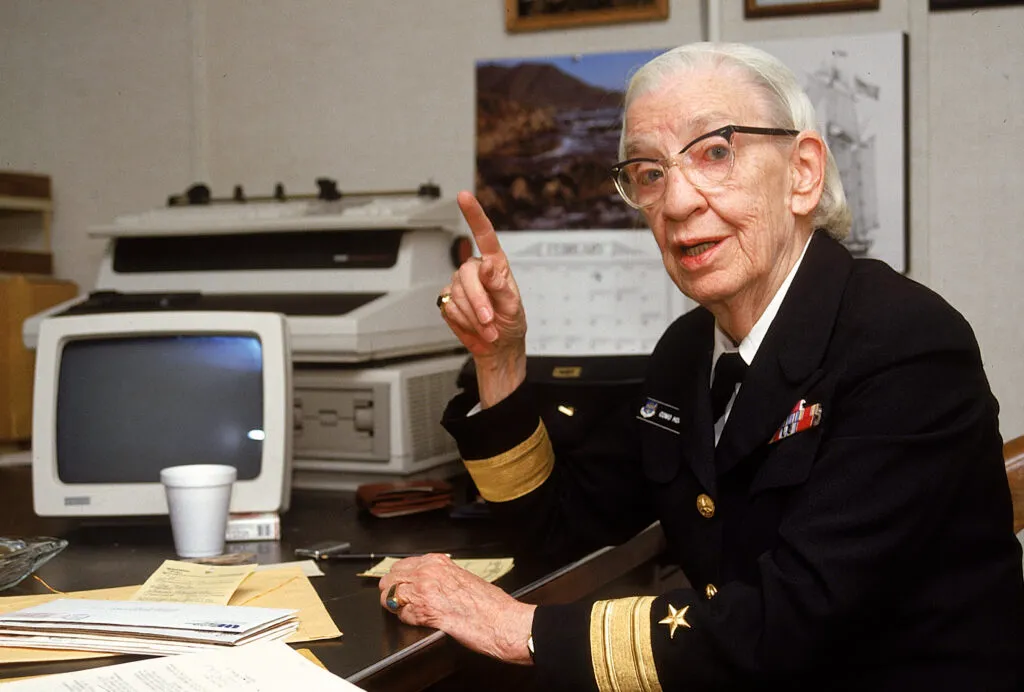Grace Hopper wasn’t the kind of woman who accepted “no” for an answer. When she first tried to join the U.S. Navy during World War II, she was turned away because of her age and small size. But that didn’t stop her. Determined to serve, she found a way through the U.S. Navy Reserve, where she quickly proved that she didn’t need to fit the mold she was going to reshape it.
What followed was a career that not only changed the course of the war but also helped launch the world of modern computing. Grace Hopper was more than a brilliant mind she was a pioneer, a trailblazer, and one of the most influential figures in American technological history.
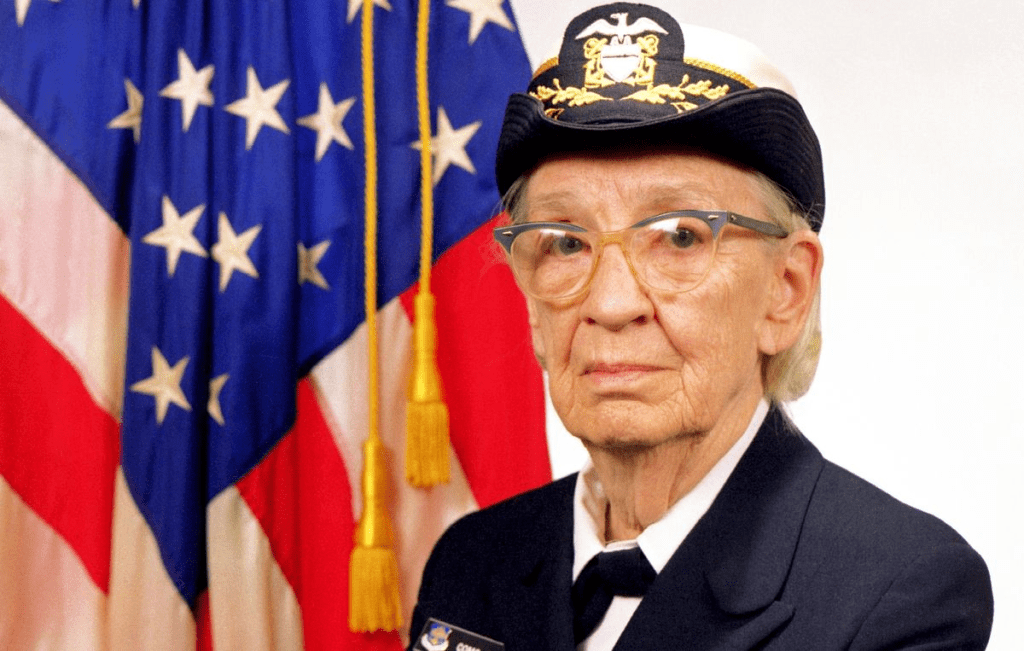
The Mark I and a New Kind of Warfare
During World War II, warfare was no longer just fought on the ground or in the air it was fought with data. The U.S. Navy was dealing with increasingly complex calculations for gunnery and torpedo trajectories, and solving these problems by hand was slow and error-prone.
That’s when Grace Hopper stepped in.
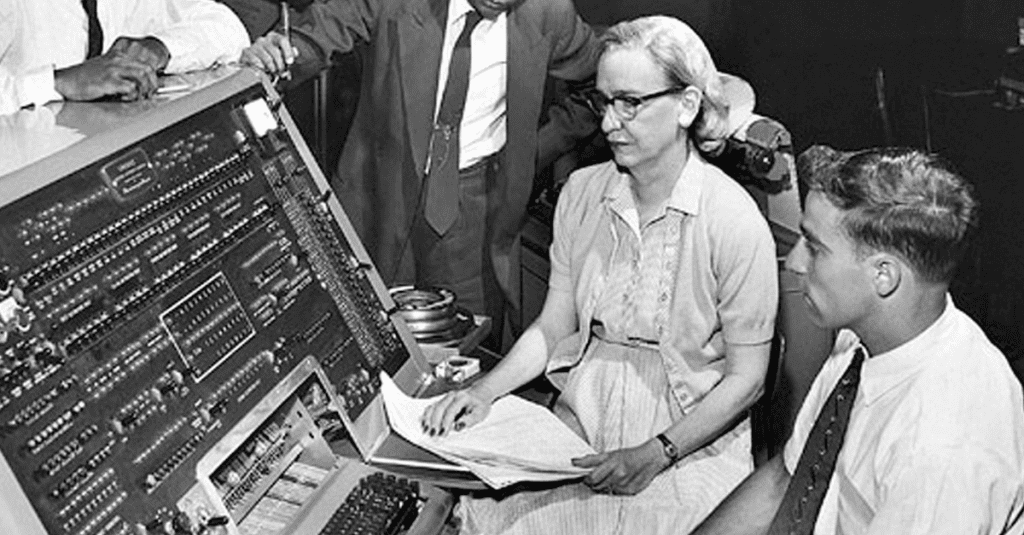
She was assigned to work with the Harvard Mark I, one of the first electromechanical computers ever built. Towering in size and packed with wires and gears, the Mark I was capable of solving mathematical problems faster than any human could. And Hopper, with her background in mathematics and physics, quickly became one of its leading operators and programmers.
Her work with the Mark I helped the Allies conduct better naval operations, calculate missile paths more accurately, and ultimately save lives. At a time when technology was still a mystery to most, Grace Hopper was already using it as a tool of strategic advantage.
Video:
Capt. Grace Hopper on Future Possibilities: Data, Hardware, Software, and People (Part One, 1982)
The Birth of “Debugging” and a Famous Moth
One of Hopper’s most famous contributions didn’t come from writing code it came from removing an actual insect.
While working on one of the early computers, a malfunction puzzled the team. Upon inspection, they found a moth trapped inside one of the circuits, causing the system to fail. Hopper and her colleagues carefully removed the insect and taped it into the logbook with a note: “First actual case of bug being found.”
From that day forward, the term “debugging” entered the world of technology and has remained part of tech vocabulary ever since. What began as a literal bug became symbolic of every unexpected glitch and fix that coders would face for decades to come.
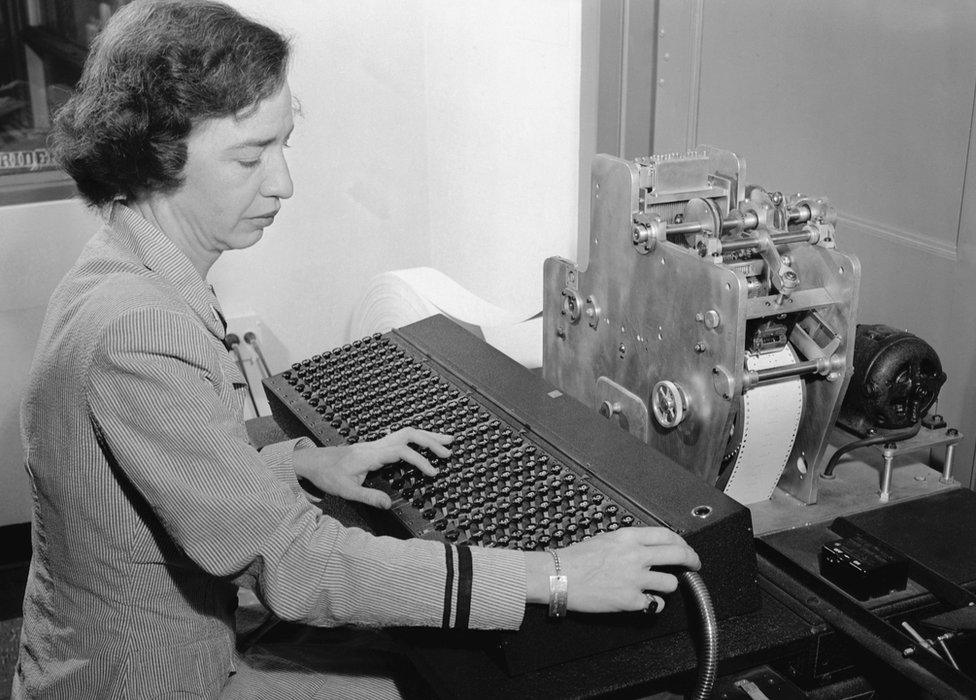
Beyond the War: A Visionary for the Digital Age
Grace Hopper’s influence didn’t stop when the war ended. She continued working in computer science, eventually becoming one of the key developers of COBOL, a programming language that allowed computers to understand commands in simple English. Her goal was to make computing more accessible not just for mathematicians or engineers, but for everyday users.
Video:
Admiral Grace Hopper Explains the Nanosecond
At a time when most thought coding should remain a niche, complex skill, Hopper was already envisioning a future where computers would become part of everyday life. Her insistence that “the most dangerous phrase in the language is, ‘We’ve always done it this way’” became her lifelong mantra.
A Lifetime of Honors and Unstoppable Drive
Throughout her career, Grace Hopper received numerous accolades, including the National Medal of Technology and Innovation and posthumously the Presidential Medal of Freedom. She achieved the rank of Rear Admiral and became the oldest active-duty officer in the U.S. Navy before her retirement.
Even as she grew older, she never lost her curiosity or energy. She continued to speak at universities, mentor young engineers, and inspire women to enter science and technology fields long after her official service ended.
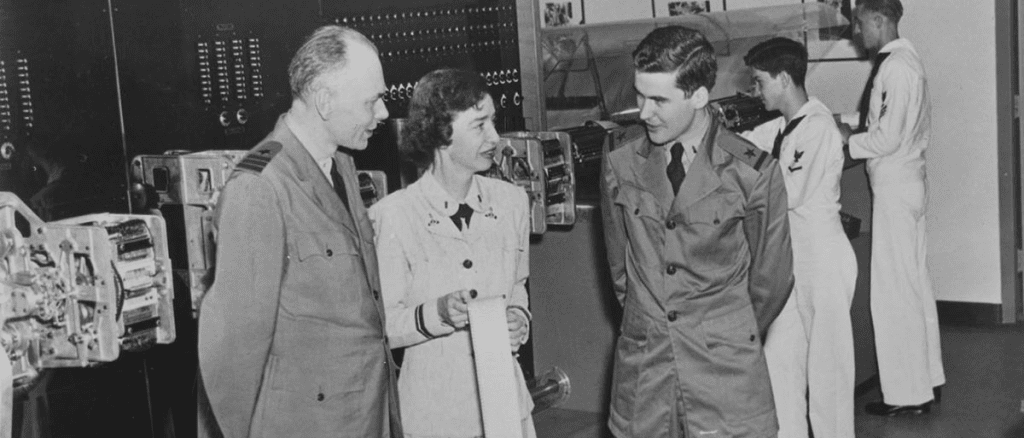
Conclusion: A Legacy That Continues to Compute
Grace Hopper’s life was a masterclass in persistence, vision, and innovation. From her service in World War II to the foundation she helped build for today’s digital world, her influence can be found in every computer we use and every program we write.
She turned denial into opportunity, confusion into clarity, and mistakes into breakthroughs. Her legacy isn’t just in the code or the machines it’s in the boldness to ask questions, to challenge the status quo, and to believe that no system, however massive, is beyond improvement.
In a world still racing forward with technology, Grace Hopper’s story reminds us that sometimes the greatest changes come from those brave enough to question everything and smart enough to reprogram the future.
